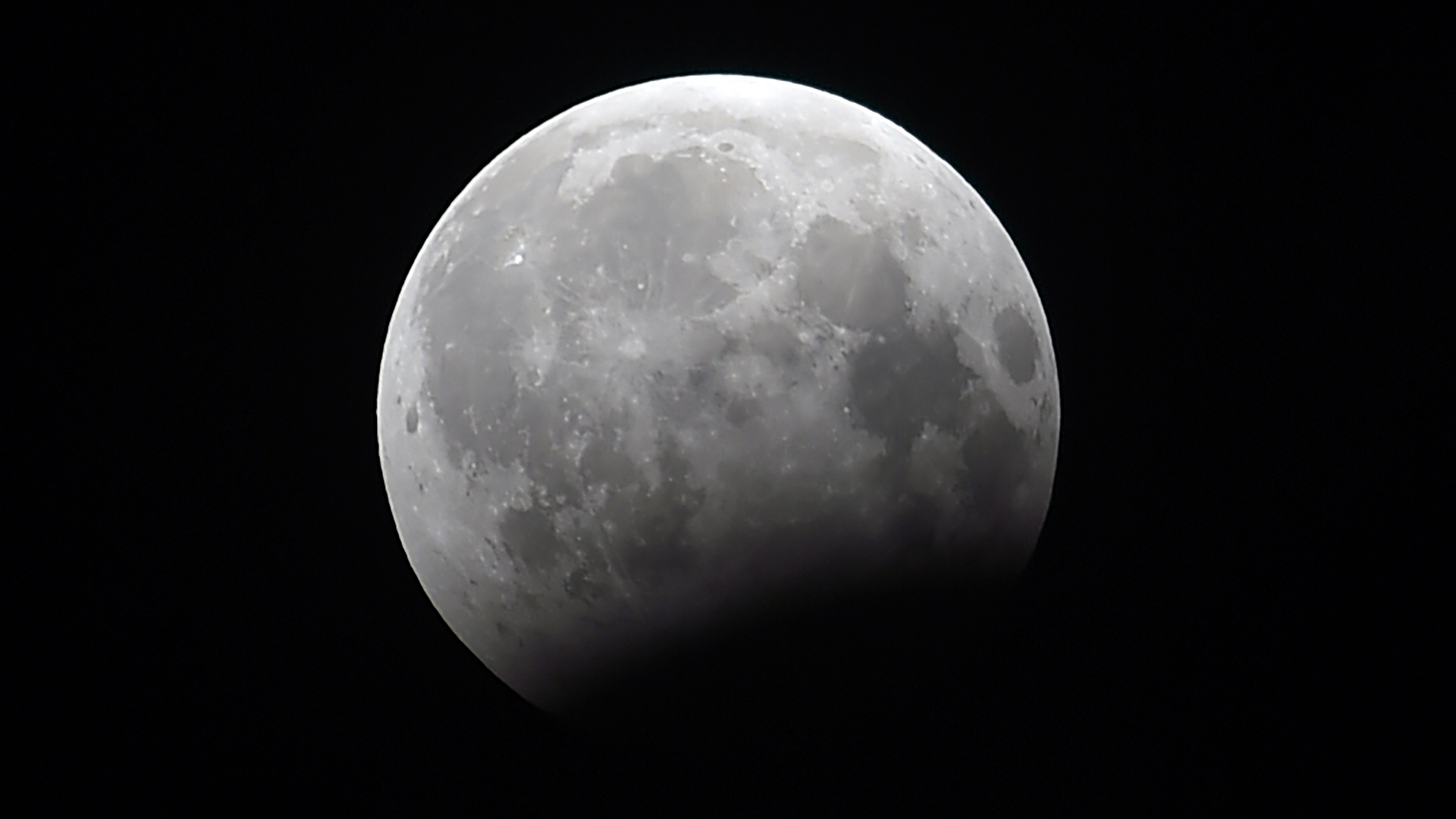See the full 'Worm Moon' eclipsed by Earth's shadow this weekend, exactly 2 weeks before the April 8 total solar eclipse
The full "Worm Moon's" brightness will dim during a penumbral lunar eclipse on March 25, exactly two weeks before a total solar eclipse crosses North America.

On Monday (March 25), people across much of the world will have the chance to witness the "Worm Moon eclipse."
The third full moon of 2024 — sometimes nicknamed the "Worm Moon" for the worms and beetles commonly seen emerging at the beginning of spring, according to the Farmer's Almanac — will move through Earth's outer shadow, resulting in a slight penumbral lunar eclipse that will make the full moon appear dimmer as an odd-looking shadow moves across its surface.
The almost perfect alignment of the moon, Earth and the sun will put the moon on a celestial trajectory that will cause a total solar eclipse on April 8.
In North America, there will be two important times to observe the moon. The first is at dusk on Sunday, March 24, when the full Worm Moon will rise in the east. You can find the exact time for your location on this moonrise calculator. (The moon will also appear bright and full one day before and after the true full moon.)
The second observation window is a few hours later, during the early hours of Monday, March 25, when the full moon will move through Earth's outer shadow — its penumbra — between 12:53 and 5:32 a.m. EDT. Over four hours and 39 minutes, Earth's shadow will gradually move across the lunar surface from southeast to northwest from our perspective.
Related: April 8 total solar eclipse: The best places to stargaze near the path of totality
At the event's peak, enough sunlight will be blocked from reaching the moon to cause 95% of the lunar surface to be in shadow. That will occur at 3:12 a.m. EDT. Watching the edge of Earth's shadow darkening the moon is a subtle-yet-beautiful sight, so look south around an hour before and after the time of maximum eclipse.
Sign up for the Live Science daily newsletter now
Get the world’s most fascinating discoveries delivered straight to your inbox.
This eclipse will be visible from North and South America, Europe, East Asia, Australia and New Zealand. It signals the beginning of an eclipse season, during which the moon crosses the ecliptic — the sun's path through Earth's sky — during successive full and new phases. That will result in a perfect alignment of Earth, the moon and the sun, causing the April 8 total solar eclipse, which will be visible from Mexico, the U.S. and Canada.
The next lunar eclipse will be a partial lunar eclipse on Sept. 18. That will be a prelude to an annular — or "ring of fire" — solar eclipse that will be visible from Rapa Nui/Easter Island, Chile and Argentina on Oct. 2.

Jamie Carter is a freelance journalist and regular Live Science contributor based in Cardiff, U.K. He is the author of A Stargazing Program For Beginners and lectures on astronomy and the natural world. Jamie regularly writes for Space.com, TechRadar.com, Forbes Science, BBC Wildlife magazine and Scientific American, and many others. He edits WhenIsTheNextEclipse.com.









